Text
Oh let me meditate on the beast of devouring that feeds on the stars, that star devourer dragon
Let me repel this Star dragon and banish it from the light of my Sun
- Ancient Sunfire chant, Tales of Xadia
I'm thinking about the sun and the stars and how Laurelion is, probably, both.
The Big Bang, in real life
The majority of atoms which make up us, our earth, and even our very own sun, were formed in the hearts of the very first stars in the universe.
These stars were made of lighter elements, mostly Hydrogen, Helium, and Lithium. But under the immense pressure at the core of those first stars, heavier atoms like Carbon, Oxygen and Nitrogen were formed. The stars eventually died - exploded - and released those heavier elements into the universe to be crafted into other forms.
As Carl Sagan famously put it, "We are made of star stuff."
And so Aaravos's quote in the teaser for season six - We are, all of us, stardust - is a blatant nod to the Sagan quote as well as, I am assuming, that aspect of the universe in some shape or form. Allegorically, it speaks to the idea of the universality of existence in the basest sense. But also, it acknowledges that the stars, like everything else, operate generationally.
So in this way, if we are to assume the TDP cosmos operates at least somewhat similar to our own, Xadia's sun is a younger (but still old as balls) star, from a different generation than the stars which are far more distant and ancient.
(As a side note, the very first stars in the universe did not last very long. Though certain stars in existence right now have "lifetimes" which are projected to last longer than the universe has currently been in existence.)
So if Xadia's sun is technically a star, even by Xadia's own admission (see Sunfire chant), then by this metric I have to ask...
What makes the Sun arcanum different from the Star arcanum?
While those first, most ancient of stars produced the materials which would become life, only a sun can sustain life and is therefore inextricably linked with the earth and all the life on it. It's this connection which I imagine is responsible for the change in the nature of the magic.
In Callum's Spellbook, Callum makes some word-association lists for the different types of magic. He associates "truth" with both Sun and Star (perhaps a trait of their shared stardom). No other words match up completely, but it feels like they are referencing similar things within different contexts.


The Sun teaches while the Stars are simply intelligent; the Sun is a "guiding light" while the Stars are associated with "destiny." Further, many of the other words Callum associates with the sun are about being in positive community with others (optimism, warmth, charisma, leadership). The nature of the sun is more giving, nurturing, and dare I say loving than that of your average star. Sun is revealing and honesty, Star is mysterious and reality-altering. Further, there is a dynamism in the words for Sun Magic that is absent from Star Magic - sharing knowledge vs simply having knowledge, guiding vs prescribing a set path.
(Another side note: Callum also mentions that Star mages are born, which, Callum's limited understanding aside, is perhaps a hint about what it will take to connect to the Star Arcanum. I have thoughts, but.... I'll just leave that there, winky face)
Obviously, these word associations can only go so far. Some of the most hostile and arrogant (eh eh!!) figures we've met have been Sun-aligned. But it does make me wonder about the beginning of Sun magic and what that introduction may have looked like.
Ever wonder what those sparkly dots are up there?*
Okay, so big question for me. Is Aaravos a star, like, literally a personification of a ball of gas burning billions of miles away, or is he just like, a very special elf? The same goes for all Startouch elves.
Zubeia refers to Aaravos as both a star and as an elf, and it's one of those things which I can't decide is real or simply a more poetic way of speaking of him. Is "Startouch elf" simply another type of star? Official art also sometimes depicts him and others as constellations. Are they the formed consciousness of a collection stars?
But it also makes me think of how often Sunfire elves personify the sun/the sun orb.
JANAI: You are a student of history, yes? Do you know where the Great Orb of the Sunforge came from?
KARIM: Legends say it was a gift from the Sun herself. The gift of a millenium.
- "The Drakewood," S4E6
In "The Queen's Mercy," we have...
Aditi nodded. “[...]and so, as the Sun’s daughter, I will lead you into her embrace.”
...and earlier, there is this:
Queen Aditi the Merciful, they called her.
Queen Aditi the Kind.
The Light of the Sun Incarnate.
Kim’dael had thought it all an insufferable exaggeration. Sunfire elves gilded everything they could touch, of course they would do the same to their beloved leader.
Karim personifies the corrupted sun orb in "After Darkness":
He could still see it: the top of the Sunforge Tower, upside-down from where he lay, shrouded in inky corruption. It looked ill, its sickness weeping red and crowning the spire in a haze of blood.
[...]
We will come back, he promised his beloved, tainted city, his lost home. We will not abandon you.
The orb pulsed mutely, a cry for help he could not answer.
TDP uses personification a lot, so it is kind of hard to parse out when it's being literal and when it's being lyrical. Perhaps in the examples cited it's simply the ostentatious way of the Sunfire elves like Kim'dael thinks. But if Aaravos, a known person, can be a star, then I can easily reason vice versa.
In the Book 1 novelization, Aaravos refers to himself as "of the First Elves." And if that is true, it follows that there must have been "Second Elves."
So who is Laurelion?
The significance of the laurel in the Western canon goes back to the myth of Daphne and Apollo.
There are various versions of the story, but essentially, Apollo (popularly associated with the sun), falls helplessly in love with Daphne. Though her reasons vary in different iterations, Daphne turns away from Apollo's affections. She runs and Apollo pursues. Just as Apollo is about to catch her, she begs for help - sometimes from her father, a river god, and sometimes from her mother, a nymph or Gaia - and she is saved by being turned into the laurel tree. In Ovid's Metamorphosis, when Apollo reaches Daphne post-transfiguration, he can still feel her heart beating below the bark. From that point on, the laurel wreath was associated with Apollo, achievement, and victory.
Gold, the element, takes the symbol Au from its Latin word, Aurum, which has etymological ties to 'aurora' (dawn). Names likes Aurelio or Aurelius similarly mean "golden" or "guilded."
So, taken together, I of course think immediately of this:
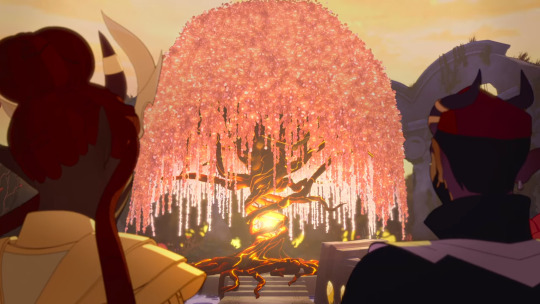
THAT BEING SAID, this looks more like a weeping willow or a wisteria than it does a laurel, which has bushy foliage rather than hanging. The closest I can maybe get is a mountain laurel, which does have blooms that hang kinda sorta like a wisteria, though not nearly in such a dramatic fashion. But anyway!
The golden laurel...⋆。°✩Laurelion✩°。⋆
Interestingly, in Ovid's retelling of Apollo and Daphne, Apollo's love is the result of being struck by Cupid's golden arrow, while Daphne's disgust of Apollo's advances are the result of being struck by a lead-tipped arrow. And so, there is an association there with gold and love. And within the context of the myth - Cupid is getting petty revenge on Apollo after Apollo is boastful and arrogant about his own prowess with a bow and arrow - it's also an instance of weaponizing love.
Which brings us to that which is known everforth as...
The Nova Blade
It is actually quite common for stars to have companions and to exist in what is called a binary star system. In this system, two stars are gravitationally locked in orbit and can appear as a single object when observed by the naked eye. Sometimes, the proximity between these two stars results in what is called a nova - a sudden brightness which appears to be a new star. Novas are not associated with stellar "death" (you'd be thinking of supernova, in that case).
Now in our universe, novas are not actually stars. They are events, momentary bursts of brightness under specific circumstances between two stars. But the name "nova" originally came from the term "stella nova" which means new star.
…and though undying, took last breath,
immortal Laurelion was no more.
- "The Death of the Immortal"

Did Laurelion just...die? You know, it was really unclear...
I do not think the Nova Blade killed Laurelion in the moment described in the poem. Kazi is so doubtful and Callum is so sure - Callum you fool! - surely that would be too easy (quote quote easy)?
I will grant that "Supernova Blade" would sound kind of hokey, and even originally I had thought, "Oh cool, 'nova,' like 'SUPERnova!'" And then I thought to look up just 'nova' and it turns out it was actually its own thing. But even without all that, the 'though-undying' of it all haunts me.
And so I hold to the idea that the Nova Blade makes an immortal mortal. It does bring death's bite, but in a way in which Laurelion becomes something else, reborn with death's promise like all other mortal beings are.
I have two point five ideas.
The Light of the Sun Incarnate
My first hypothesis is, of course, that Laurelion became the tree with the Sunseed with a name that's a nod to Daphne and Apollo. Of course, I'm assuming here that the tree in which the Sunseed is kept is responsible for producing/sustaining the Sunseed, which may not be true.
Now the drawback of this idea is the legend that the Sunseed was a gift from the Sun herself. So here, it would have to be within the context of the Sun sacrificing Laurelion in some way for this purpose. There's obvious Jesus parallels here which, full disclosure, is not really my bag, baby, but there are plenty of elements in TDP that very easily slot in with Christian canon. But also, in the laurel myth Daphne begs a parent to save her, which puts the sacrifice of it all in a different light. It makes me wonder if the event with the Nova Blade is self-inflicted and, mayhaps, an act of love. So in this sense, the Sun "gifted" the world (or just the Sunfire elves, I dunno) her child by simply letting her child go.
My second hypothesis is that Laurelion became the first Sunfire elf, of the second elves. We are, all of us, stardust. It would not come as a shock to me if all elves were ultimately descended from the Startouch elves of old.
AND THEN we've got Aaron Ehasz talking about how the red dragon scale amulet (...and look, this show does color coding, that's SUN) is somehow related to Laurelion?
Sunfire elf, I say! SUNFIRE ELF!
Combining both of these scenarios, I could see Laurelion being the child of the Sun (again IF we are to assume each star is a living entity). Or maybe Startouch elves are born OF stars while not, technically, being the same thing, like an egg hatching the next evolution of its mother.
And so, perhaps Laurelion chose to become mortal, to become the first Sunfire Elf. And all of Laurelion's children, and their children's children, and their children's children's children, they were all of them children of the sun, the light of the sun incarnate, bringing the hope and optimism of something new to the world; destined to return in death to the embrace of their very first mother. And as a symbol of her love, the Sun gifted Laurelion the Sunseed, golden and cradled within a tree.
*oddly relevant Lion King reference
27 notes
·
View notes
Text
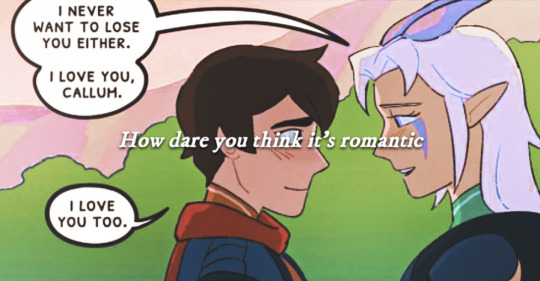


Now I'm down bad, cryin' at the gym
Everything comes out teenage petulance
Fuck it if I can't have him
I might just die, it would make no difference
Down bad, wakin' up in blood
Starin' at the sky, come back and pick me up
Fuck it if I can't have us
#rayllumedit#rayllum#caylangst#death by a thousand cuts era#post ttm#ttmedit#my edits#graphics#taylor swift#how's this for a throwback#tdpedit#tdp#the dragon prince
4 notes
·
View notes
Text
early faves for the new album:
but daddy i love him (with some rayla vibes)
who's afraid of little old me? (claudia song bless)
loml (fucking hell man)
the smallest man who ever lived (lissa & viren for the bridge maybe?)
#and that's for now bc i'm taking a break just to listen more to smallest man#dragons rambles#taylor swift
15 notes
·
View notes
Text
s6 give me lissa screencaps so i can edit her and viren to "the smallest man who ever lived" please
#viren x lissa#DID YOU SLEEP WITH A GUN UNDER OUR BED#AND YOU DESERVE PRISON BUT YOU WON'T GET TIME#taylor swift
8 notes
·
View notes
Text
Oh let me meditate on the beast of devouring that feeds on the stars, that star devourer dragon
Let me repel this Star dragon and banish it from the light of my Sun
- Ancient Sunfire chant, Tales of Xadia
I'm thinking about the sun and the stars and how Laurelion is, probably, both.
The Big Bang, in real life
The majority of atoms which make up us, our earth, and even our very own sun, were formed in the hearts of the very first stars in the universe.
These stars were made of lighter elements, mostly Hydrogen, Helium, and Lithium. But under the immense pressure at the core of those first stars, heavier atoms like Carbon, Oxygen and Nitrogen were formed. The stars eventually died - exploded - and released those heavier elements into the universe to be crafted into other forms.
As Carl Sagan famously put it, "We are made of star stuff."
And so Aaravos's quote in the teaser for season six - We are, all of us, stardust - is a blatant nod to the Sagan quote as well as, I am assuming, that aspect of the universe in some shape or form. Allegorically, it speaks to the idea of the universality of existence in the basest sense. But also, it acknowledges that the stars, like everything else, operate generationally.
So in this way, if we are to assume the TDP cosmos operates at least somewhat similar to our own, Xadia's sun is a younger (but still old as balls) star, from a different generation than the stars which are far more distant and ancient.
(As a side note, the very first stars in the universe did not last very long. Though certain stars in existence right now have "lifetimes" which are projected to last longer than the universe has currently been in existence.)
So if Xadia's sun is technically a star, even by Xadia's own admission (see Sunfire chant), then by this metric I have to ask...
What makes the Sun arcanum different from the Star arcanum?
While those first, most ancient of stars produced the materials which would become life, only a sun can sustain life and is therefore inextricably linked with the earth and all the life on it. It's this connection which I imagine is responsible for the change in the nature of the magic.
In Callum's Spellbook, Callum makes some word-association lists for the different types of magic. He associates "truth" with both Sun and Star (perhaps a trait of their shared stardom). No other words match up completely, but it feels like they are referencing similar things within different contexts.


The Sun teaches while the Stars are simply intelligent; the Sun is a "guiding light" while the Stars are associated with "destiny." Further, many of the other words Callum associates with the sun are about being in positive community with others (optimism, warmth, charisma, leadership). The nature of the sun is more giving, nurturing, and dare I say loving than that of your average star. Sun is revealing and honesty, Star is mysterious and reality-altering. Further, there is a dynamism in the words for Sun Magic that is absent from Star Magic - sharing knowledge vs simply having knowledge, guiding vs prescribing a set path.
(Another side note: Callum also mentions that Star mages are born, which, Callum's limited understanding aside, is perhaps a hint about what it will take to connect to the Star Arcanum. I have thoughts, but.... I'll just leave that there, winky face)
Obviously, these word associations can only go so far. Some of the most hostile and arrogant (eh eh!!) figures we've met have been Sun-aligned. But it does make me wonder about the beginning of Sun magic and what that introduction may have looked like.
Ever wonder what those sparkly dots are up there?*
Okay, so big question for me. Is Aaravos a star, like, literally a personification of a ball of gas burning billions of miles away, or is he just like, a very special elf? The same goes for all Startouch elves.
Zubeia refers to Aaravos as both a star and as an elf, and it's one of those things which I can't decide is real or simply a more poetic way of speaking of him. Is "Startouch elf" simply another type of star? Official art also sometimes depicts him and others as constellations. Are they the formed consciousness of a collection stars?
But it also makes me think of how often Sunfire elves personify the sun/the sun orb.
JANAI: You are a student of history, yes? Do you know where the Great Orb of the Sunforge came from?
KARIM: Legends say it was a gift from the Sun herself. The gift of a millenium.
- "The Drakewood," S4E6
In "The Queen's Mercy," we have...
Aditi nodded. “[...]and so, as the Sun’s daughter, I will lead you into her embrace.”
...and earlier, there is this:
Queen Aditi the Merciful, they called her.
Queen Aditi the Kind.
The Light of the Sun Incarnate.
Kim’dael had thought it all an insufferable exaggeration. Sunfire elves gilded everything they could touch, of course they would do the same to their beloved leader.
Karim personifies the corrupted sun orb in "After Darkness":
He could still see it: the top of the Sunforge Tower, upside-down from where he lay, shrouded in inky corruption. It looked ill, its sickness weeping red and crowning the spire in a haze of blood.
[...]
We will come back, he promised his beloved, tainted city, his lost home. We will not abandon you.
The orb pulsed mutely, a cry for help he could not answer.
TDP uses personification a lot, so it is kind of hard to parse out when it's being literal and when it's being lyrical. Perhaps in the examples cited it's simply the ostentatious way of the Sunfire elves like Kim'dael thinks. But if Aaravos, a known person, can be a star, then I can easily reason vice versa.
In the Book 1 novelization, Aaravos refers to himself as "of the First Elves." And if that is true, it follows that there must have been "Second Elves."
So who is Laurelion?
The significance of the laurel in the Western canon goes back to the myth of Daphne and Apollo.
There are various versions of the story, but essentially, Apollo (popularly associated with the sun), falls helplessly in love with Daphne. Though her reasons vary in different iterations, Daphne turns away from Apollo's affections. She runs and Apollo pursues. Just as Apollo is about to catch her, she begs for help - sometimes from her father, a river god, and sometimes from her mother, a nymph or Gaia - and she is saved by being turned into the laurel tree. In Ovid's Metamorphosis, when Apollo reaches Daphne post-transfiguration, he can still feel her heart beating below the bark. From that point on, the laurel wreath was associated with Apollo, achievement, and victory.
Gold, the element, takes the symbol Au from its Latin word, Aurum, which has etymological ties to 'aurora' (dawn). Names likes Aurelio or Aurelius similarly mean "golden" or "guilded."
So, taken together, I of course think immediately of this:

THAT BEING SAID, this looks more like a weeping willow or a wisteria than it does a laurel, which has bushy foliage rather than hanging. The closest I can maybe get is a mountain laurel, which does have blooms that hang kinda sorta like a wisteria, though not nearly in such a dramatic fashion. But anyway!
The golden laurel...⋆。°✩Laurelion✩°。⋆
Interestingly, in Ovid's retelling of Apollo and Daphne, Apollo's love is the result of being struck by Cupid's golden arrow, while Daphne's disgust of Apollo's advances are the result of being struck by a lead-tipped arrow. And so, there is an association there with gold and love. And within the context of the myth - Cupid is getting petty revenge on Apollo after Apollo is boastful and arrogant about his own prowess with a bow and arrow - it's also an instance of weaponizing love.
Which brings us to that which is known everforth as...
The Nova Blade
It is actually quite common for stars to have companions and to exist in what is called a binary star system. In this system, two stars are gravitationally locked in orbit and can appear as a single object when observed by the naked eye. Sometimes, the proximity between these two stars results in what is called a nova - a sudden brightness which appears to be a new star. Novas are not associated with stellar "death" (you'd be thinking of supernova, in that case).
Now in our universe, novas are not actually stars. They are events, momentary bursts of brightness under specific circumstances between two stars. But the name "nova" originally came from the term "stella nova" which means new star.
…and though undying, took last breath,
immortal Laurelion was no more.
- "The Death of the Immortal"

Did Laurelion just...die? You know, it was really unclear...
I do not think the Nova Blade killed Laurelion in the moment described in the poem. Kazi is so doubtful and Callum is so sure - Callum you fool! - surely that would be too easy (quote quote easy)?
I will grant that "Supernova Blade" would sound kind of hokey, and even originally I had thought, "Oh cool, 'nova,' like 'SUPERnova!'" And then I thought to look up just 'nova' and it turns out it was actually its own thing. But even without all that, the 'though-undying' of it all haunts me.
And so I hold to the idea that the Nova Blade makes an immortal mortal. It does bring death's bite, but in a way in which Laurelion becomes something else, reborn with death's promise like all other mortal beings are.
I have two point five ideas.
The Light of the Sun Incarnate
My first hypothesis is, of course, that Laurelion became the tree with the Sunseed with a name that's a nod to Daphne and Apollo. Of course, I'm assuming here that the tree in which the Sunseed is kept is responsible for producing/sustaining the Sunseed, which may not be true.
Now the drawback of this idea is the legend that the Sunseed was a gift from the Sun herself. So here, it would have to be within the context of the Sun sacrificing Laurelion in some way for this purpose. There's obvious Jesus parallels here which, full disclosure, is not really my bag, baby, but there are plenty of elements in TDP that very easily slot in with Christian canon. But also, in the laurel myth Daphne begs a parent to save her, which puts the sacrifice of it all in a different light. It makes me wonder if the event with the Nova Blade is self-inflicted and, mayhaps, an act of love. So in this sense, the Sun "gifted" the world (or just the Sunfire elves, I dunno) her child by simply letting her child go.
My second hypothesis is that Laurelion became the first Sunfire elf, of the second elves. We are, all of us, stardust. It would not come as a shock to me if all elves were ultimately descended from the Startouch elves of old.
AND THEN we've got Aaron Ehasz talking about how the red dragon scale amulet (...and look, this show does color coding, that's SUN) is somehow related to Laurelion?
Sunfire elf, I say! SUNFIRE ELF!
Combining both of these scenarios, I could see Laurelion being the child of the Sun (again IF we are to assume each star is a living entity). Or maybe Startouch elves are born OF stars while not, technically, being the same thing, like an egg hatching the next evolution of its mother.
And so, perhaps Laurelion chose to become mortal, to become the first Sunfire Elf. And all of Laurelion's children, and their children's children, and their children's children's children, they were all of them children of the sun, the light of the sun incarnate, bringing the hope and optimism of something new to the world; destined to return in death to the embrace of their very first mother. And as a symbol of her love, the Sun gifted Laurelion the Sunseed, golden and cradled within a tree.
*oddly relevant Lion King reference
#gift motif#deep lore dive#speculation#i do lean towards the scale being red bc of blood but#it could very much be a sun dragon thing#other people's meta#analysis#laurelion
27 notes
·
View notes
Text
So I’m watching the screeners with my daughter who points out in the opening credits to 508, that it’s Callum, not Viren, turning to stone and Aaravos picking him up.
AE: Hmmm. We had Callum in the credits in season four, but it’s similar, basically when Aaravos and temptation and dark magic are…
JR: Near at hand.
AE: Yeah, she’s right to connect that.
VS: Keep an eye on the openers.
AIPT: Let’s end on slytherin steel, the spell that Callum performed once again to free his loved one. I feel it’s a major impactful moment when he dabbles in dark magic. Talk about ending the season on that note.
VS: Well, as we are currently working on season six, I can tell you that every time you do dark magic, you take one more step in a bad, bad direction. It takes a lot for you to come back.
AIPT: To that point, does that mean that there’s no saving Claudia?
VS: I’ll leave that up to everybody to make their theories. She believes in what she does is for love and for family. It’s like Miyana, who’s in love, but believes in Karim. If you have that passion, and you follow, you’ll do a lot. Season five, Claudia is under a lot of pressure, it’s not going to get any easier.
‘The Dragon Prince’ creators dish on season 5 post-mortem
#old interview but i completely forgot it existed#+ more confirmation that kim'dael is (obviously) using dark magic#tdp#the dragon prince#cast and crew#there's more questions than this but these were the ones that were most interesting to me#tdp callum#tdp claudia#interviews#villads spansberg#justin richmond#aaron ehasz#EVERY STEP FORWARD IS A CHOICE
10 notes
·
View notes
Text
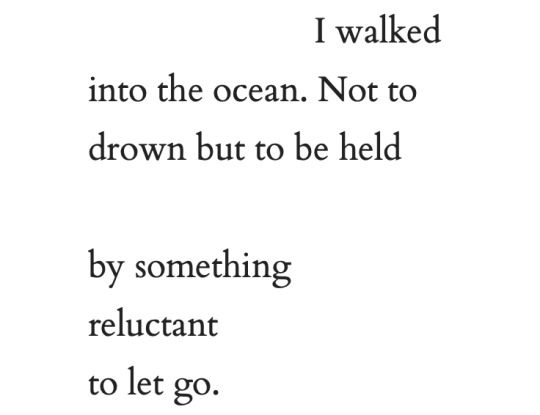
Leila Chatti, from "Postcard from Gone"
34K notes
·
View notes
Text
obsessed with the fact that callum only accuses rayla of leaving for no reason at all when he finds out she didn't even get the closure she wanted
#4x03#the intricacies.#rayllum#every separation is a link#arc 2#s4#like before that. was he still thinking she had somewhat of a 'good reason'#bc if it gave her peace of mind that'd be Something to him. and he's not willing to treat 'protecting him'#as worth it if it means not protecting her
23 notes
·
View notes
Text
me when characters experience the devastating consequences of their own actions:
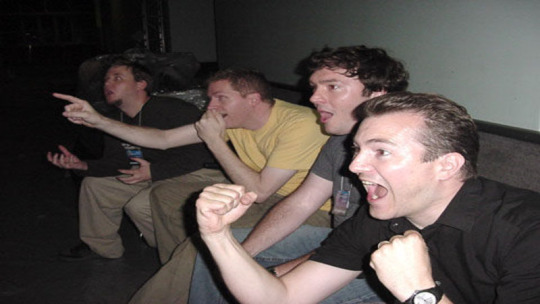
32K notes
·
View notes
Photo
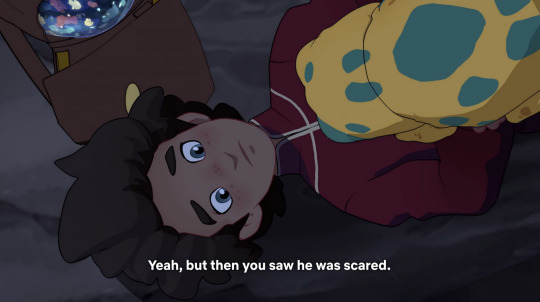
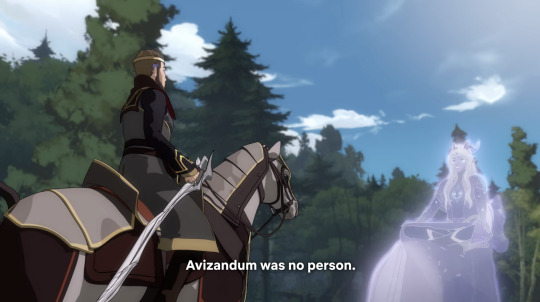


A person
60 notes
·
View notes
Text

I’ve literally never drawn Ethari before and I so had to
68 notes
·
View notes
Text


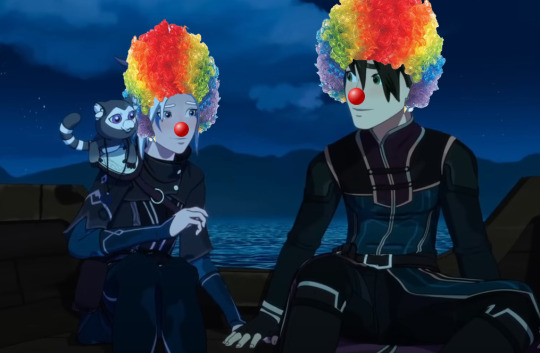
they are the entire circus
#yeah#rayllum#rayla fully rejecting that runaan was right / sparing & saving callum foreshadowing my beloved#reaffirming once and for all that she's not an assassin friend lmao#arc 1#arc 2#multi#platonic rayllum#sort of
97 notes
·
View notes
Text



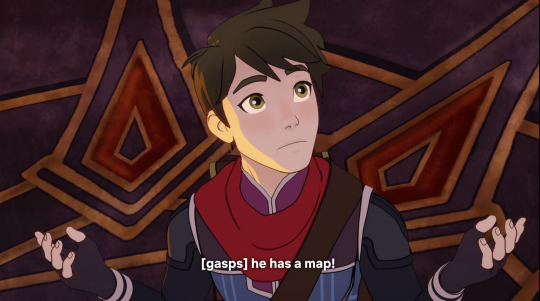






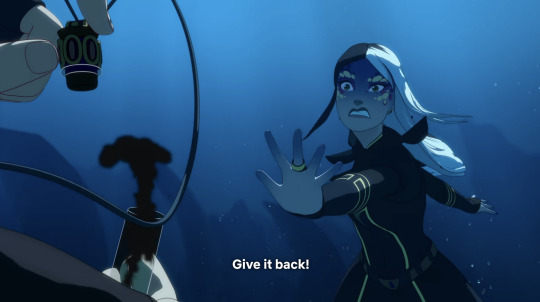

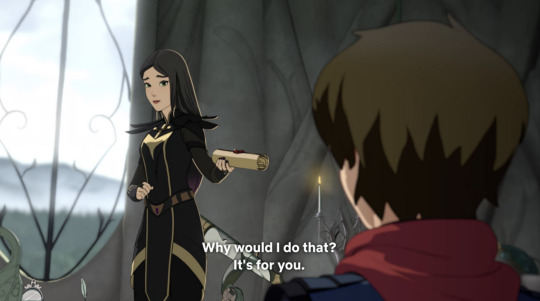

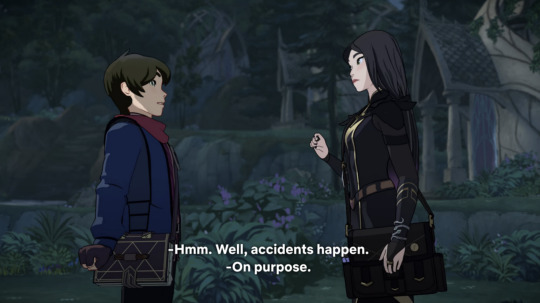
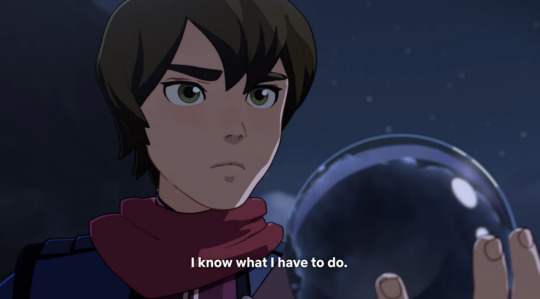

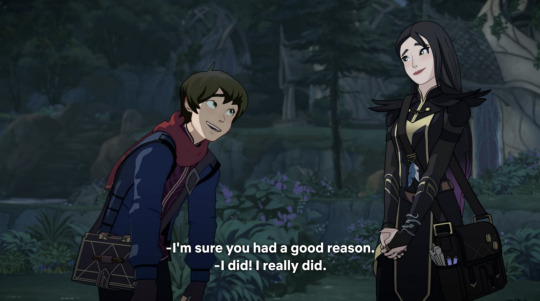
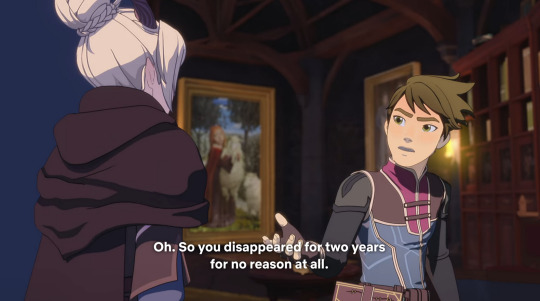


A few things because I realize without it, this amalgamation of screencaps may not make much sense but it's all I've been thinking about for like 3 days:
As the two mages of the younger generation, Callum and Claudia are caught in a loop of both competing with and furthering each other's progression in their magical goals. We see this manifest in two main ways:
Callum and Claudia giving each other knowledge they need, even if it's incomplete. Claudia gives Callum the first half of the fulminus spell (and Rayla the second); Callum figures out the riddle that lets Claudia know there's a map to be had. While Claudia offered to literally teach him dark magic, it happened solely accidentally, with Callum's acquired knowledge being her 'undoing' (on behalf of Rayla) in 2x07. This transfer of knowledge and goals means that even though Callum helped get the prison from the Sea of the Cast Out with the opposite goal of Claudia's, he will likely 'finish' her half of the spell, if you will, by being what results in Aaravos actually getting out (possession or otherwise). Likewise, this references back to Claudia giving Callum's Harrow letter after he similarly lost it, and it is that very letter that gives him his biggest piece of information (thus far) about Aaravos' key: "Why would I open it? It's for you" / "Perhaps it will be you, Callum, who discovers the key's secrets" / "Come on sad prince - let's go get your cube" (1x04).
They're both clever, and even when they're screwing each other over, it usually results in some kind of knowledge being transferred back to each other, willing or unwillingly.
We see this most directly in the initial primal stone theft, which is arguably what kicks off both their arcs in the series in a lot of ways. Callum steals and ultimately destroys/smashes Claudia's primal stone in order to free Zym (and subsequently Rayla). He repeats this pattern of (thematic? literal?) theft a few more times: he steals/uses her dark magic book in order to free the dragon in 2x07 (and subsequently Rayla); he steals and empties out her potion in 5x09, knowing that she relies on it for her magic; and as mentioned, him and the rest of the dragang successfully steal the prison from her grasp, too.
The similarity of the prison to the primal stone has likewise been reinforced. The Dragang get the prison from Claudia after Rayla has already allied with Ezran, just like in 1x03, leaving Callum to be the one to actually disempower Claudia by removing her object of power (potion, primal stone). 6x01 ties the prison to the primal stone by giving Callum a similarly staged nightmare about smashing it, which echoes his old 2x08 dreams that do have a premonition slant surrounding them. The fact that Aaravos speaks of a great shattering (Patience) and Callum compares the whole world to a primal stone only makes this potential thread of symbolism more foreboding, whether it speaks to Aaravos' desire for getting out of his prison or for taking revenge on the Startouch elves in some manner.
Last but not least, we have the basis of for why Callum smashes Claudia's stolen primal stone (future prison?) in the first place: he had a good reason. While it's clear this sentiment is important for Claudia (and Terry) as she uses it as justification for her own actions - "Everything I'm doing is for my family. It's to save my dad" - and as the basis for why she's not evil, we see in a few instances that it's important to Callum too. He is relieved when Claudia can tell he had a good reason, specifically criticizes Rayla for not having one upon her return (as she didn't even get closure about Viren in her time away), and asserts that "if she didn't tell me, she had a good reason" when he sets her free in 5x01. And Callum asserts his own justification for both doing dark magic in the past and presumably in the present: "I had to, to save [Rayla]" and Finnegrin affirms this: "Oh, how noble."
When Claudia says "I need to tell you about some things back at home, you know, good things, bad things," Callum tells her about another good and bad thing in destroying the primal stone. It hatched Zym and took off Rayla's binding, but it also left him magic-less (and in the future, vulnerable to dark magic use). Which, ironically, is also true of Rayla's return both being "kind of good, and kind of bad" in helping Callum unlock another arcanum ("To love is simply to know this: the tides are true as the ocean is deep") and simultaneously making him more vulnerable to dark magic use (the snake chains in 5x08).
All of this being a long winded way of saying I am intrigued by how Callum and Claudia may continue to circle and 'take' things from one another - Callum leaving a deceptive pearl in the castle that Claudia may mistake for the real one / Callum being responsible for achieving Claudia's goal of freeing Aaravos - in season six, because they really have one of the most interesting and thematic foil relationships in the whole series.
#callum x claudia#my rotisserie chicken#tdp#the dragon prince#pawns#multi#parallels#analysis series#analysis#mini meta#rotating them so carefully in my mind like rotisserie chicken rn#tdp meta#tdp callum#tdp claudia
41 notes
·
View notes
Text
Suffer.
#went for king harrow#cause anything is stuff i either never believed and so never lost#things i was excited to watch characters lose#& i love slightly more jaded but twice as devoted rayllum with my whole heart#have they changed from s3 with each other? yeah. but not nearly as much as they could've#if they let the separation / possession outright tear them to pieces. there's nothing they can't mend y'know?#tag ramble#fandom
68 notes
·
View notes
Text
There’s that post that’s like ‘everyone should get into a tiny niche fandom at least once’ fully agree, that was really fun -- but I would like to add that everyone should get into a fandom where their opinions run counter to major fanon because it really teaches you about sticking to your guns and trusting your interpretation of the text without having to rely on peer validation
because WHAT are people talking about sometimes
#being in the atla fandom at like 14 taught me so much lmao#fandom#also as much as it sometimes sucks being in a fandom where canon really doesn't give u what u want in X thing here is also important#cause it teaches u how to look at a text for objective signs > believing fandom conspiracy theories
10K notes
·
View notes
Text
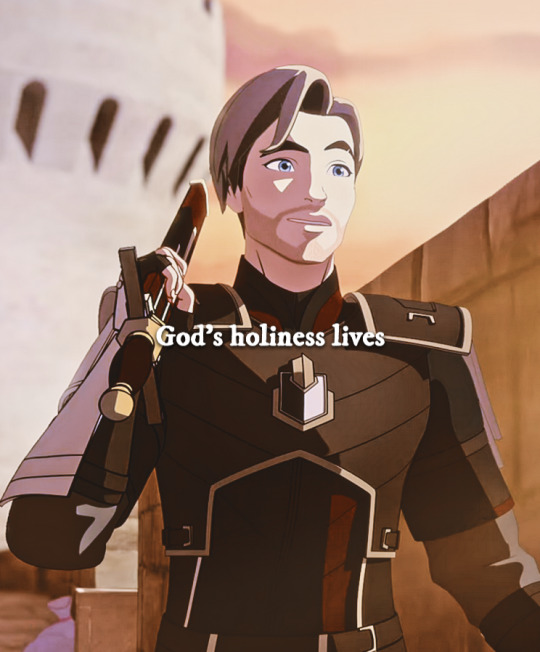


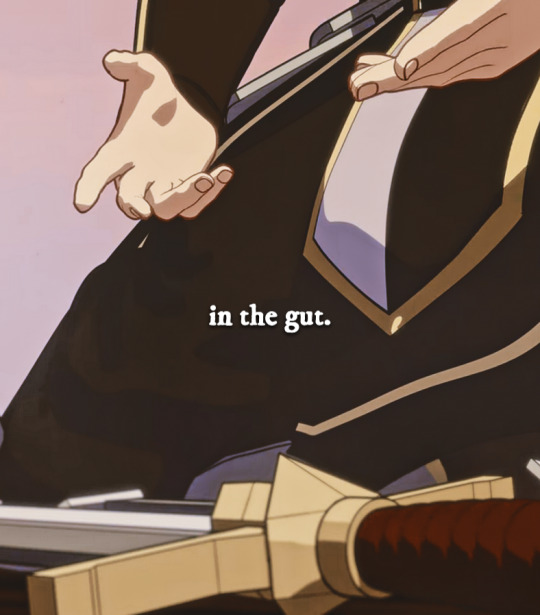
insp
#i can't find where the exact quote is from so if anyone knows lemme know <3#sorenedit#tdpedit#tdp soren#soren#the dragon prince#my edits#graphics#multi#tdp#personal fave
26 notes
·
View notes
Text
For Day Five of Snake Boi Callum Week: ruthlessness / temper
Summary: Callum didn’t think he’d ever be compelled to use the blood freezing spell on anyone. He was wrong. Oneshot
Word Count: 1.9k
Ch5: Some Say In Ice
Some say the world will end in fire,
Some say in ice.
From what I’ve tasted of desire
I hold with those who favor fire.
But if it had to perish twice,
I think I know enough of hate
To say that for destruction ice
Is also great
And would suffice.
—Fire and Ice, Robert Frost
The celestial elves catch up to them easily.
Rayla supposes she should’ve known that they would. No plan she or Callum have ever made has ever, well, gone according to plan. There’s always a hitch or a slip or kind of snag. Usually it’s her. (Because she always chokes at the worst time. Even if Callum being the unexpected snag in her plans when she’d first come to the castle is the best thing that’s ever happened to her.)
This time, it’s just bad luck.
She’s not sure why she’s thinking about their first meeting, as she and Callum stumble, sprinting best they can, through the snow, the stolen quasar diamonds in her pouch with the coins. The equally thieved Nova Blade in a sheath slung across Callum’s back alongside his staff.
Maybe it’s because they’re probably going to die, either because of the cold or because the celestial elves have gotten their hands on them. It seems like they’re almost always going to die.
A sudden gust of wind kicks the snow up in their faces, feet skidding to a halt before the wall of wind can cut them. Rayla didn’t even know Sky magic could do that, Callum’s too helpful and gentle and—but Acheros hadn’t liked them even before they’d stolen from his people, the Skywing elf landing swiftly in front of them now.
He’s removed his blindfold, eyes wide and mad—crazed—as he takes out a sword and Rayla brings her blades up just in time to meet it. They clang, her feet struggling to find more purchase than usual amid the ice and snow. Acheros is bigger than her too, broader and taller, using every bit of it to her advantage. She wishes she’d spent more time sparring with Soren rather than running ragged after Viren.
“Callum!” she yells over the bitter, natural wind in their ears. “Run!”
#rayllum#snake boi callum week#snake boi callum#s6 speculation#will this happen? no but it'd be nice. it'd be funky fresh i think#like let him torture someone a lil - as a treat#tdp#the dragon prince#fic: i slithered here from eden
23 notes
·
View notes